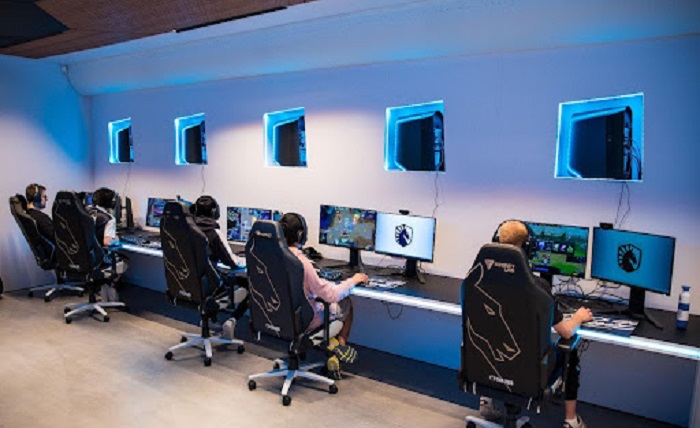Everyone has heard about esports. In the present, he came out of a niche hobby and became a professional industry similar to sports. However, esports is not just about skill, high-level players train a lot and have discipline like athletes in traditional sports. Their routines are carefully planned and cover everything from developing mechanical skills to psychological resilience. In this article, we will tell you how professional esports players structure their training and the main components of esports training routine.
Balancing Mechanical Skills and Tactical Knowledge
The basis of training of all professional players begins with the mastering of mechanical skills, including reaction time, accuracy and sharpness of movements. This is usually done with simple exercises that need to be repeated many times. For example, it can be played on custom maps or simulators for aiming when it comes to shooters. Professionals CS2 and Valorant dedicate a large part of their warm-up before the game and part of the training to this.
But having only good mechanical skills is not enough. An equally important component that can be learned from gaming news is tactical knowledge, which is also produced with training. Knowledge of the positions on the map, the composition of the team and the strategies of the opponent have a great influence on the outcome of matches. Therefore, a typical daily schedule includes both technical skills training and strategic. Teams will compete against other teams, review match records and analyze errors in positioning, managing the economy or using abilities.
During this process, many players use special software or platforms that provide all the analytical information. On them, you can find out both game news and track meta changes, roster changes, and patch updates. This allows them to adapt strategies even before they start matches.
Physical Health and Reaction Training
Esports is often associated with sitting at a desk for long hours, but pro players know that physical health directly affects in-game performance. A healthy body supports faster reaction times, better focus, and reduced fatigue during long matches.
The daily routine of professional esports players must have time for training or physical activity. This may include exercises in the gym, exercises for posture or just a walk. It helps to avoid injuries, keep health in good shape and just improve overall health. Some even include exercises to coordinate hands and eyes outside the game, such as juggling or specialized tools to train reflexes.
Eye strain is another major concern for players. While ordinary players can sit at the computer for several hours in a row, professionals follow the 20-20-20 rule – every 20 minutes look at something at a distance of 6 meters for 20 seconds. This reduces fatigue and maintains clarity of visual processing. During the tournament, these habits can prevent fatigue and increase player productivity.
Strategic Scrims and VOD Reviews
Training matches (scrims) are the basis of any professional training plan in eSports. It is not possible to train effectively if you do not spend from time to time training competitive matches. Their main goal is to recreate the real conditions of the match, allowing teams to test strategies and improve communication under pressure. Most teams plan to eat during the break between mechanical or strategic training and allocate several hours for this. Matches are usually played against opponents of similar or higher skill levels.
After training, VOD review sessions (video on demand) begin. Here, esports are quite similar to traditional sports, in which replays are also reviewed for analysis and improvement. This is where the team analyst or coach analyzes the key points — successful performances, unsuccessful overplays, and decision-making errors. For some, this training session may seem boring, but it is very difficult to overestimate its importance.
This stage often reveals patterns that raw gameplay can’t show, such as predictable rotations or overlooked opportunities to punish the enemy economy. Pro teams treat these reviews as mandatory, often spending as much time analyzing as they do playing.
Mental Resilience and Stress Management
Mental toughness separates consistent champions from occasional winners. High-pressure matches, online criticism, and the grind of a competitive season can wear down even the most skilled players. That’s why mental training has become a regular part of a pro’s schedule.
Some teams even hire sports psychologists to help the team train focus, communication and manage emotions. Techniques such as mindfulness meditation, visualization and controlled breathing are basic things, but they help players recover from stressful rounds and maintain maximum concentration throughout matches.
An equally important factor is structured rest. Ordinary players think if you play all the time and do not rest fatigue will not, but this is not true. Professional teams plan breaks both between training and between matches to prevent mental burnout and fatigue. Such activities as listening to music, walking or casual games in another genre, positively affect the long-term performance of players.
Conclusion
Collecting all the facts into a heap, we can say that the ideal training regimen in esports is an individual thing, but always balanced. The combination of improving mechanical, tactical skills, maintaining physical health and working on mental resilience are very important. Professional players don’t just play all day, they follow a structured schedule designed by specialists, designed to maximize perfection while preventing fatigue. For beginner players, the tips given in this text will also be very useful and will help you reach the professional level faster and get more victories.
